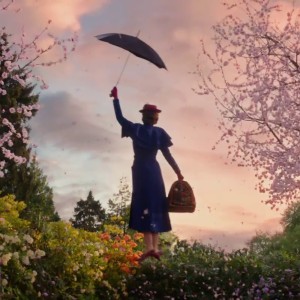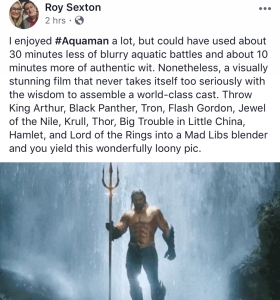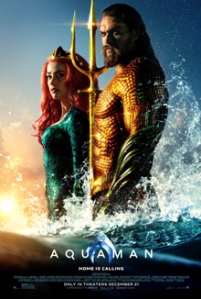Kudos to Barbie helmer and co-screenwriter Greta Gerwig (Lady Bird, Little Women), Hollywood’s first solo woman director (and likely NOT the last) to earn $1 billion at the international box office for a film. In just over two weeks no less.
I was reflecting on that milestone on the way home from seeing the fab film this morning. Why? What is it about this movie that has captured the zeitgeist so? Admittedly, we are all a bit weary of superheroes. We all likely feel a bit lost in this topsy turvy world. Are we all looking for a new hero? Someone not in spandex and a cape, but still reminiscent of childhood’s limitless hopes?
On the surface, that might be the initial draw. Refreshingly, Barbie is something else altogether. It’s deeply weird. And wonderful. Its scenic design alone is immersive, glorious, impeccably off-putting. An uncanny valley, warped toyetic reflection of reality. Plato’s Allegory of the Cave in garish bubblegum pink. An apt metaphor for what Barbieland’s free-thinking denizens intend to inspire, yet trapped in a magic shell of real life sexist consumerism run amuck.
The fact that the subversively progressive creatives (namely Gerwig, co-screenwriter and life partner Noah Baumbach and producer and star Margot Robbie) won the day over the corporate product placement overseers (Mattel, Warner Brothers?), even openly poking fun at the latter, is a miracle. This is no slick toy commercial disguised as a major motion picture (see: any/all Transformers flicks … save arguably the sweet, goofy Bumblebee). Ironically, that does more for our adoration of – and desire to purchase – associated merch as a result.
The film juggles a ton of big ideas, mostly successfully. It is proudly feminist. And also humanist. For a movie about dolls. Body types, skin colors, ages, genders, sexualities are all deftly represented and celebrated. And a key point at the end of the film is made that extremes, even in course correction to prior imbalance, perpetuate alienation. Two wrongs never make a right.
Barbie is more surreal than it is comic, though I belly-laughed plenty and cried often at unexpected moments. Its surreality is its superpower. And that quality gives you the movie you need, not necessarily wanted.
Enough ink has been spilled about the movie’s plot – and crackerjack dialogue – that I would be veering into the mansplaining zone (which this movie has wicked fun with by the way) if I recapped here. I might simply note that if Kurt Vonnegut led a writers’ circle chat with Betty Friedan, Franz Kafka, Stanley Kubrick, Tina Fey, Mel Brooks, Samuel Beckett, and Amy Heckerling, conceptualizing what an existential crisis might look like for a Barbie doll, it would likely not even touch the absurdist vistas in this film.
In essence, Barbie comes to realize a toybox utopia isn’t reflected in real life and, in fact, can be wildly misinterpreted by the now-grown children it was intended to benefit. Her awakening shares as much with Pinocchio as it does The Feminine Mystique. Refreshingly, this is not a film centered on romance, which it might have become if placed in lesser hands. Don’t get me wrong, Ken is so deeply infatuated with Barbie he ultimately launches a mutiny from unrequited frustration. Not that THAT unbridled male egotism ever happens in life. Wink. But Barbie’s journey in the film is one of self-discovery, mining fairly deep psychological territory, including identity politics, free agency, and self-determination.
When Ken’s plot to turn Barbieland phallocentric flops spectacularly, he sobs, “When I found out the patriarchy wasn’t about horses, I just lost interest anyway.” Didn’t we all, Ken. Didn’t we all.
Yes, this may be the first billion-dollar summer blockbuster to hinge its primary plot points on matriarchy vs. patriarchy. Woot!
As for our principal players: Robbie is haunting as Barbie, spinning the character’s superhumanity inward, never stooping to camp, but layering ferocity and heartache in a truly touching portrayal. Ryan Gosling as Ken is delightfully daffy and walks a quirky high wire between guileless, mercenary, and poignantly clueless. America Ferrera is our narrative anchor, still trying to keep her head above water with the disappointments and curdled hopes that daily living outside Barbieland brings. She takes all the weirdness in stride, avoiding any overreactive cliches of “real human in cartoon situations” films. And her speech about the trials and tensions and spectacularly unfair expectations women endure kicks off the film’s conclusion with just the right level of introspective pathos. Taken together, Robbie, Gosling, and Ferrera steer this glittering super ship beautifully.
They are aided and abetted by remarkable supporting players who can – and do – carry their own movies but here seem perfectly content to be stitched into a communal crazy quilt of inclusive sensibilities: Kate McKinnon, Issa Rae, Alexandra Shipp, Emma Mackey, Simu Liu, John Cena, Michael Cera, Will Ferrell, Helen Mirren, Rhea Perlman, and more.
Music is yet another character in the film (although my old ears wouldn’t mind if cinemas cranked DOWN the volume every once in a while). Music producer Mark Ronson and a host of pop superstars supply commentary both overt and subtle throughout the film. My hubby turned to me at one point and said, “I thought you said this wasn’t a musical.” Oops.
Yes, this film is in many ways a frolic. As expected. But it’s also something more. And surprisingly I suspect I will be thinking about Barbie for weeks to come. I also surmise this is a film that will benefit from repeated viewings, which may be the ulterior motive after all, knowing that most kids (and adults) will watch a beloved movie over and over and over. With the empowering messages woven together here, that’s a very good thing. In the end, there is no shame loving Barbie, toys, or yourself. At any age.



























 In addition to
In addition to